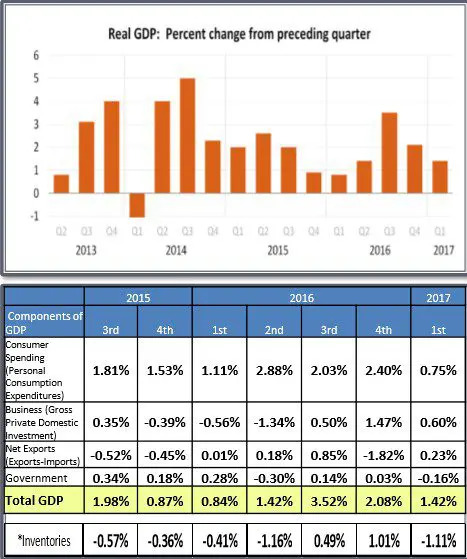
2017 Economic Summary
In June, the economy experienced a noteworthy surge in employment, with 222,000 jobs added, marking the most substantial increase since February. This exceeded economists' expectations and revealed better job growth for April and May than previously estimated. Over the past three months, the economy has generated an average of 194,000 jobs, which is a favorable comparison to the monthly average of 166,000 during the first quarter and the yearly pace of 187,000 for the entirety of the previous year.
The unemployment rate increased by a tenth to 4.4% last month, rising from its lowest point since May 2001. This increase is due to more Americans entering the labor force in June, even though not all secured employment. Federal Reserve officials anticipate the jobless rate to range between 4.5% and 4.8% in the long run. The current unemployment level suggests that the economy is either at full employment or very close to it, indicating that nearly all job seekers have found work.
In June, 62.8% of Americans were either employed or actively seeking employment, a slight increase from 62.7% the previous year. However, the labor-force participation rate remains near four-decade lows, mainly due to an aging population entering retirement. Nevertheless, it could also imply that some prime working-age individuals still need to participate in the job market despite the expectation that they would rejoin as conditions improve.
Private-sector workers experienced a familiar 2.5% increase in pay compared to the previous year, a trend that has persisted for approximately two years. While wage growth has been steady, it has yet to be particularly robust. A decade ago, before the recession, average hourly earnings grew by 3.6% annually. Many economists anticipate that wage growth will accelerate with historically low levels of unemployment.
A broader measure of unemployment, the U-6 rate, rose to 8.6% in June, up from 8.4% the previous month. This measure includes unemployed workers in the labor force and considers Americans discouraged from job searching and part-time workers who would prefer full-time positions. This rate remained relatively high throughout the economic expansion compared to the standard unemployment rate. Still, it has since returned to historical norms, averaging 8.3% two years before the recession began.
